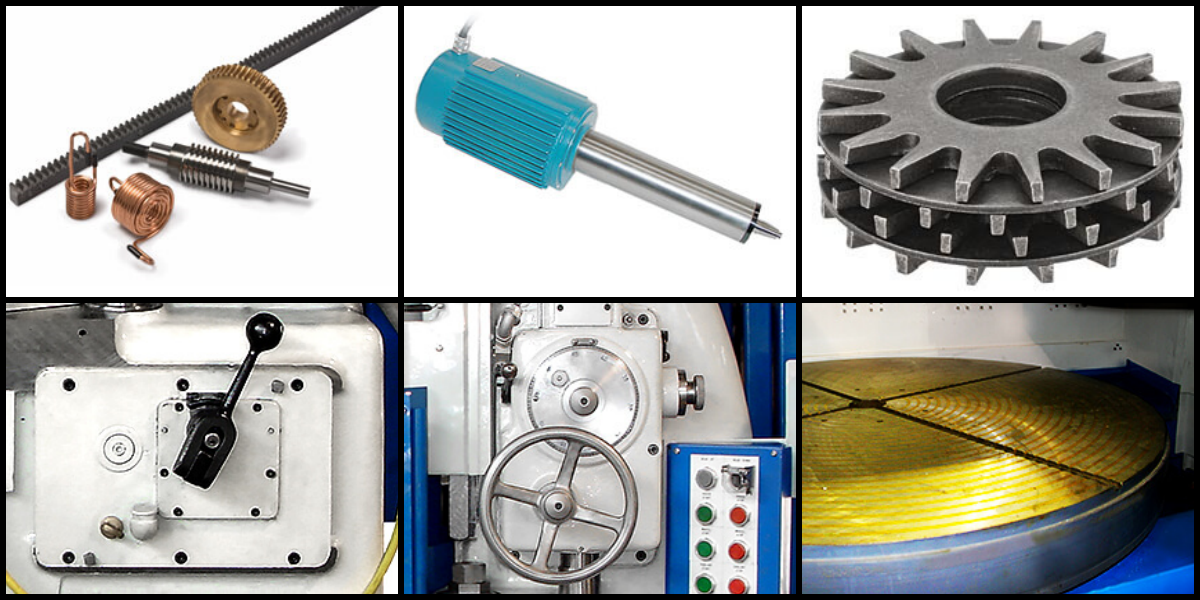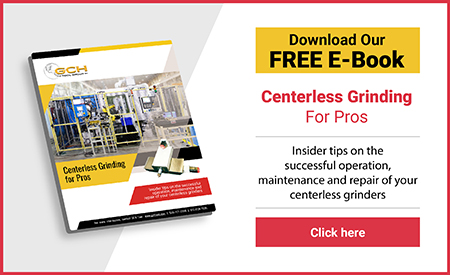Key Parts & Assemblies of Surface Grinders and Their Applications

Surface grinding is one of the most critical aspects of metalworking, and a surface grinder is the machine that gets the job done. In essence, a surface grinder is a machine tool used to produce flat and smooth surfaces on a workpiece. Surface grinders come in different types, but the two primary varieties are horizontal-spindle and vertical-spindle types. Regardless of the type, surface grinders consist of several core parts that work in harmony to produce the desired outcome.
Below, we discuss the key parts of surface grinders and explore the various applications that make them invaluable in the world of metalworking.
Chuck Assemblies
Chuck assemblies consist of three main components: a magnetic chuck, a chuck controller and a chuck speed box. The magnetic chuck secures and stabilizes the workpiece, allowing it to be held in place during machining. The chuck controller ensures that the chuck operates smoothly and efficiently, while the chuck speed box allows for easy adjustment of the workpiece’s orientation and position.
By using a chuck assembly, machinists can load and unload workpieces quickly and easily, reducing downtime and increasing productivity. Overall, chuck assemblies provide a secure and stable clamping system that makes machining processes more efficient and effective.
Applications
Surface grinder chuck assemblies allow for:
- Precision grinding of flat surfaces on materials like steel, aluminum and other metals.
- Creation of smooth and accurate finishes on workpieces used in various industrial applications.
- Production of components with tight tolerances, critical in industries such as aerospace and automotive manufacturing.
Chuck Speed Boxes
The chuck speed box, which is located on the side of the machine, controls the rotational speed of the magnetic chuck. Chuck speed boxes offer several functions and benefits, including the ability to adjust the speed of the chuck to suit different materials and grinding conditions, reducing heat buildup and friction, preventing chatter marks and improving overall uniformity.
Applications
Surface grinder chuck speed boxes are useful for:
- Fine-tuning the grinding process for different materials and workpiece specifications.
- Achieving optimal surface finishes and dimensional accuracy.
- Enhancing overall productivity by enabling operators to adapt the machine to various grinding tasks efficiently.
Grinding Wheelhead Assemblies (Spindles)
This assembly provides the power and motion required for the grinding wheel to operate, making it one of the most essential surface grinder parts. These assemblies, also known as grinder spindles, can be classified into two types: fixed or movable. Fixed spindles typically have a single grinding wheel fixed in place, while movable spindles allow for adjustments to be made to the grinding wheel’s position.
The benefits of a grinding wheelhead assembly include the ability to make different adjustments to the grinding wheel, such as speed and depth, as well as ensuring proper alignment and balance of the wheel. A well-functioning spindle contributes greatly to the efficiency and accuracy of the grinding process.
Applications
Surface grinder spindles allow for:
- Precision removal of material to achieve specific surface finishes, such as flatness and parallelism.
- Grinding of various materials, including ferrous and non-ferrous metals, ceramics and composites.
- Production of components with stringent dimensional tolerances and surface quality for critical industrial applications.
Upper and Lower Feedboxes
Two crucial components of surface grinders are the upper feedbox and the lower feedbox. The upper feedbox is located above the worktable and controls the speed of the wheelhead assembly. On the other hand, the lower feedbox is located under the worktable and controls the speed of the worktable.
Both boxes play pivotal roles in surface grinding operations. They optimize the material removal rate and surface quality, ensuring that the finished product is of the highest quality possible. Additionally, these boxes prevent damage to the workpiece and the grinding wheel by ensuring that they meet at the correct height and angle.
Applications
Surface grinder upper and lower feedboxes work to:
- Regulate the depth of the cut and feed rate for achieving specific material removal requirements.
- Ensure uniformity in the grinding process to maintain consistent surface finishes and dimensional accuracy.
- Facilitate the efficient production of components with complex geometries and intricate surface specifications.
OEM Parts and Custom Parts
OEM stands for “original equipment manufacturer,” meaning these are the same parts that were originally used in your grinder. Custom parts, on the other hand, are created specifically for your grinder by a third-party manufacturer. Both options have their pros and cons.
OEM parts are often seen as the safer choice for reliability and performance, but they can be more expensive and may not be easily accessible. Custom parts may be cheaper and more functional, but they run the risk of not working as well as OEM parts. Moreover, the appearance of the parts may differ between the two options. Ultimately, the decision between OEM parts and custom parts depends on how much time and money you are willing to invest in your surface grinder.
Applications
Some applications for OEM and custom parts include:
- Replacement of worn or damaged components to maintain the overall efficiency and precision of the surface grinder.
- Incorporation of custom parts to enhance the machine’s capabilities and adapt it to specific industrial processes and materials.
- Optimization of the surface grinder’s performance through the integration of specialized components tailored to unique operational demands.
Choose GCH Tool Group for Key Surface Grinder Parts
Understanding the different parts of a surface grinding machine is critical not only for long-term maintenance, but also for effective operation and execution. Whether you’re looking to buy or rent a surface grinder, understanding its common elements will give you the insight you need make informed decisions.
For more information on these components and selection advice, contact GCH Tool Group today!

